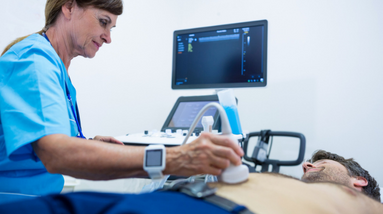
Echocardiography is a non-invasive medical test that uses high-frequency sound waves, also known as ultrasound, to create images of the heart. The test is performed using a handheld device called a transducer, which is placed on the chest and sends sound waves through the body. The sound waves bounce off the heart and create images that can be viewed on a computer screen.
Echocardiography is commonly used to diagnose and evaluate various heart conditions, such as heart valve disease, heart failure, and congenital heart defects. It can also be used to monitor the heart’s function during and after certain medical treatments, such as surgery or chemotherapy.
There are several types of echocardiography, including transthoracic echocardiography (TTE), which is the most common, and transesophageal echocardiography (TEE), which is performed by inserting a small probe through the mouth and into the esophagus to get a closer view of the heart. Echocardiography is a safe and painless procedure that does not involve radiation exposure.